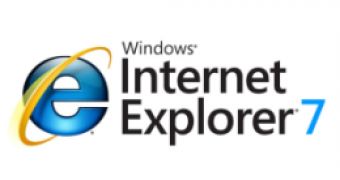On October 18, 2007, Microsoft released Internet Explorer 7 for Windows XP SP2 and Windows Server 2003. The browser was subsequently included as a default component in Vista, shipping with the latest client in November 2006 to businesses and to general consumers in January 2007. It was not until mid November 2007 that Microsoft started serving IE7 via Automatic Updates to all Internet Explorer 6 users of XP SP2 and Windows Server 2003. At this point in time, the Redmond company continues to push IE7 automatically via Windows Updates to all IE6 Windows users, with the exception of those running Windows Vista.
In the fall of 2007, the Redmond company introduced a minor upgrade to IE7, taking it to version 7.0.5730.13, revamping the graphical user interface by enabling the Menu by default, delivering a new start page and cutting the artificial umbilical cord which connected it with the Windows Genuine Advantage anti-piracy mechanisms. IE 7.0.5730.13 continues to be dropped via WU, but in order to stop it's delivery, IE6 users can simply cancel the update once and it will no longer be offered.
Microsoft is even providing a tool for IT administrators. The Internet Explorer 7 Blocker Toolkit is designed to completely disable automatic delivery of the browser as a high-priority update through Automatic Updates and the Windows Update and Microsoft Update websites. The tool was last updated in October 2007 and is available for download here.
Now, Microsoft is getting ready to also make IE7 available via Windows Server Update Services. "On February 12, Microsoft will release the IE7 Installation and Availability update to WSUS marked as an Update Rollup package. What this means is that this update will automatically flow only to clients of WSUS severs that have been configured to auto-approve update rollups, which as you know, is not the default or commonly used WSUS configuration," revealed Cecilia Cole, WSUS Program Manager.
Users of WSUS 3.0 have to disable the auto-approval rule, if it has been set in place ahead of Microsoft debuting the IE7 WSUS updates, namely before February 12, 2008. With the auto-approved rule disable, synchronizing the Windows Internet Explorer 7 package to the WSUS server will not deploy the browser automatically.
"These steps will temporarily modify the auto-approval that you may have created to ensure that packages classified as Update Rollups are not automatically approved for installation. Click Start, click Administrative Tools, and then click Microsoft Windows Server Update Services 3.0. Expand ComputerName, and then click Options. Click Automatic Approvals. Click the rule that automatically approves an update that is classified as Update Rollup, and then click Edit. Click the Update Rollups property under the Step 2: Edit the properties (click an underlined value) section. Clear the Update Rollup check box, and then click OK," Microsoft explained.
Additionally, WSUS 3.0 administrators will now have to manually synchronize the Windows Internet Explorer 7 package to the WSUS server. IE7 will subsequently appear as an unapproved update in the list featuring all WSUS updates.

 14 DAY TRIAL //
14 DAY TRIAL //